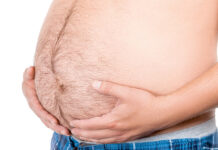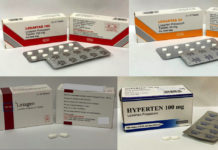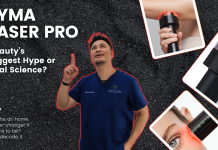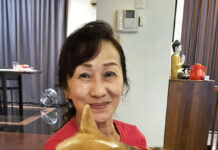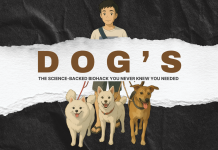Beauty is in the eye of the beholder, but there are some universal, objective measures of beauty. Certain traits, such as facial symmetry, averageness and clear, glowing skin (1), make us more attractive to others.
One measure of beauty which is often talked about is the golden ratio. Since ancient times, philosophers, artists and architects believe that faces and body proportions which fit the golden ratio are more aesthetically pleasing to us. This explains why we will find golden ratio proportions in many works of art today, such as the Vitruvian man by Leonardo Da Vinci. But is the golden ratio the true measure of universal beauty like they always say?
What is the Golden Ratio?
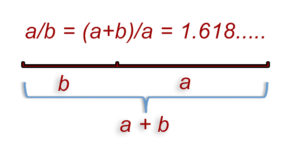
The golden ratio is a special mathematical ratio, whereby the ratio of the larger value (a) to the shorter value (b) is equal to the ratio of the sum of the 2 values (a+b) to the larger vale (a). The golden ratio approximates 1.618. It is often denoted by the Greek numeral “phi Փ”. The golden ratio and the Fibonacci sequence (1,1,2,3,5,8,13…), where every number is the sum of the previous 2 numbers, are intimately related. In the Fibonacci sequence, every number divided by the number before it approximates Փ.
What is so Special about the Golden Ratio?
The golden ratio is also known as the “divine proportion”, because it appears over and over again in natural phenomenon, such as on flower petals, a nautilus shell, and the opposing twists of pine cones. Its seems as if nature had a way of creating phenomenon which is beautiful and aesthetically pleasing.
Many of the greatest thinkers in history have studied the golden ratio extensively. These include ancient Greek mathematicians such as Pythagoras to Euclid, Renaissance artists like Leonardo Da Vinci, and more recent painters like Salvador Dali. Time and again, the golden ratio appears in works of art, architecture, design, and even music.

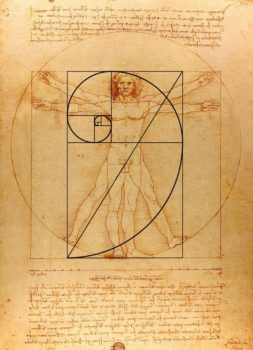
The Golden Ratio in Facial Proportions and Beauty
Many experts believe the that we innately find facial proportions which fit the golden ratio more beautiful – that Փ is the secret to a beautiful face. Indeed, if we look into our own faces, and at pictures of celebrities, we will find golden ratios everywhere, from the proportions to the head as a whole, to the eyes, nose, mouth, and facial widths. This is regardless of race or gender.
Using actress Natalie Portman as an example, we see some golden ratios in her face:

Dr Stephen Marquardt, a oral and maxillofacial surgeon, famously created a mask based on golden ratio proportions. He used the mask to guide patients undergoing plastic surgery so that they can achieve the best results.
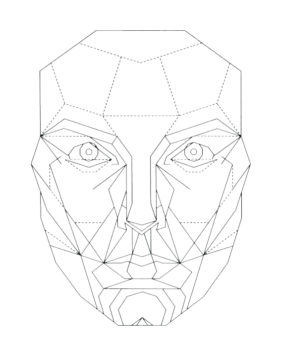
How do you use the Golden Ratio to Assess Beauty?
There are many methods to use the golden ratio. One way is to overlay the Marquart beauty mask over your photograph. You can also use golden ratio lengths, and rectangles to the same effect. In 2012, 18 year old Florence Colgate was found to have facial proportions which fit the golden ratio best after a nationwide hunt in Britain. I think many will agree with me that while she is indeed beautiful, she is not the most beautiful woman in the world. So where did the golden ratio as universal beauty assessment tool fall short?
The Golden Ratio is a Guide, not a Law
The golden ratio is a good guide to objectively define beauty, however, there are many other factors that come into play – cultural preferences and symmetry for example. In addition, we are all born unique, and though we may not be perfect mathematically, it is what makes us who we are.
The Marquadt beauty mask, for example is more suitable for European populations than sub-Saharan Africans and Asians (2). I use my picture as an example. If I apply the Marquart beauty mask to my face, I may look divinely more proportionate, but I risk not looking like myself anymore:
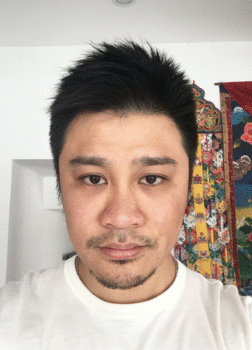
Similarly, if you look at some Chinese actresses, such as Fan Bing Bing, she fits some parts, but not all parts of the Marquardt beauty mask – her eyebrows are higher, and her face is smaller:
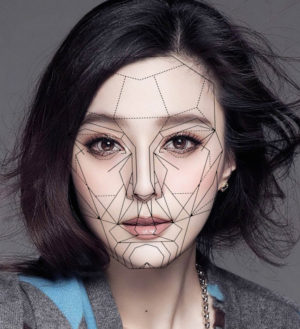
A better way to apply the golden ratio, is to adjust facial proportions towards Փ, rather than to fit it perfectly. This way, we retain our uniqueness, and improve our attractiveness. In other words, we become the best versions of ourselves.
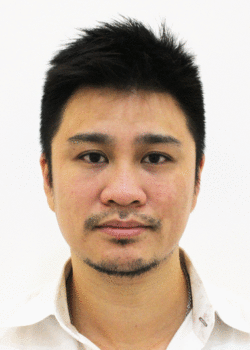
What Can We Do To Achieve Golden Ratio Proportions?
In our local context, many of our faces do not fit golden ratio proportions (3). There are surgical and non-surgical means to make our faces more “golden”. Fillers can be used in the chin, nose and lips, and cheeks to augment the shapes and length. Botox, on the other hand, can be used in the upper face to shape the eyebrows, and make the eyes look larger. Botox can also be used on the masseters to make the face slimmer, if required.
There are some things which can only be improved by surgery – for example, the width of the eyes can only be increased by a epicanthoplasty. If the cheekbones are too large, reduction via shaving of the bone is required. The nose width is also best treated with surgery, rather than non-surgical methods.
Don’t Forget Other Measures of Beauty Too!
Beauty is an ever-changing concept, affected by what we see on social media, our past experiences, and even our age (4). A recent study of the current Miss Universe contestants, for example, show that they have longer foreheads, thinner lower-upper lip height proportions, more nose tip projection, and wider nasofrontal angle compared with previous references (5). They did not necessarily fit any pre-conceived ratios of proportions.

The condition of our skin is one very important measure of facial beauty. Clear, glowing skin is always associated with health and attractiveness(6). Hence, a good way to improve the way we look is to take good care of our skin with a good skin care regime, sun avoidance and laser treatments to improve skin tone and clarity if there is a need to.
Aging skin is also often described as being “tired” and “unhappy”. Therefore, treating the signs of aging, via skin lifting treatments and volume replacement, for example, will help make us look more attractive.
Most importantly, every one of us is unique. What we perceive as beautiful is also unique. Please do not think that we have to fit into a certain mold, or ratios. Have a conversation with your doctor to find out how facial proportions and golden ratio measurements may or may not help you look like the best version of yourself.
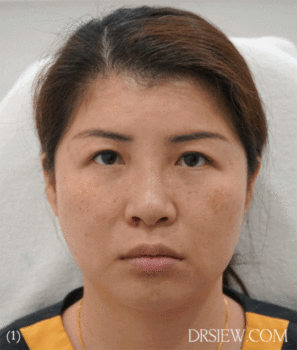
References:
- Philos Trans R Soc Lond B Biol Sci. 2011 Jun 12;366(1571):1638-59. doi: 10.1098/rstb.2010.0404. Facial attractiveness: evolutionary based research. Little AC1, Jones BC, DeBruine LM.
- Aesthetic Plast Surg. 2008 Mar;32(2):200-8. doi: 10.1007/s00266-007-9080-z. Marquardt’s Phi mask: pitfalls of relying on fashion models and the golden ratio to describe a beautiful face. Holland E.
- N Am J Med Sci. 2012 Dec;4(12):624-9. doi: 10.4103/1947-2714.104312. Identification of facial shape by applying golden ratio to the facial measurements: an interracial study in malaysian population. Packiriswamy V, Kumar P, Rao M.
- Cogn Emot. 2019 Nov 20:1-15. doi: 10.1080/02699931.2019.1694491.The effects of face attractiveness on face memory depend on both age of perceiver and age of face. Lin T, Fischer H
- Plast Reconstr Surg Glob Open. 2019 Feb 11;7(2):e2044. doi: 10.1097/GOX.0000000000002044. What Is the Most Beautiful Facial Proportion in the 21st Century? Comparative Study among Miss Universe, Miss Universe Thailand, Neoclassical Canons, and Facial Golden Ratios. Burusapat C, Lekdaeng P
- Int J Primatol. 2009 Dec;30(6):845-857. Epub 2009 Oct 26. Facial Skin Coloration Affects Perceived Health of Human Faces. Stephen ID, Law Smith MJ


